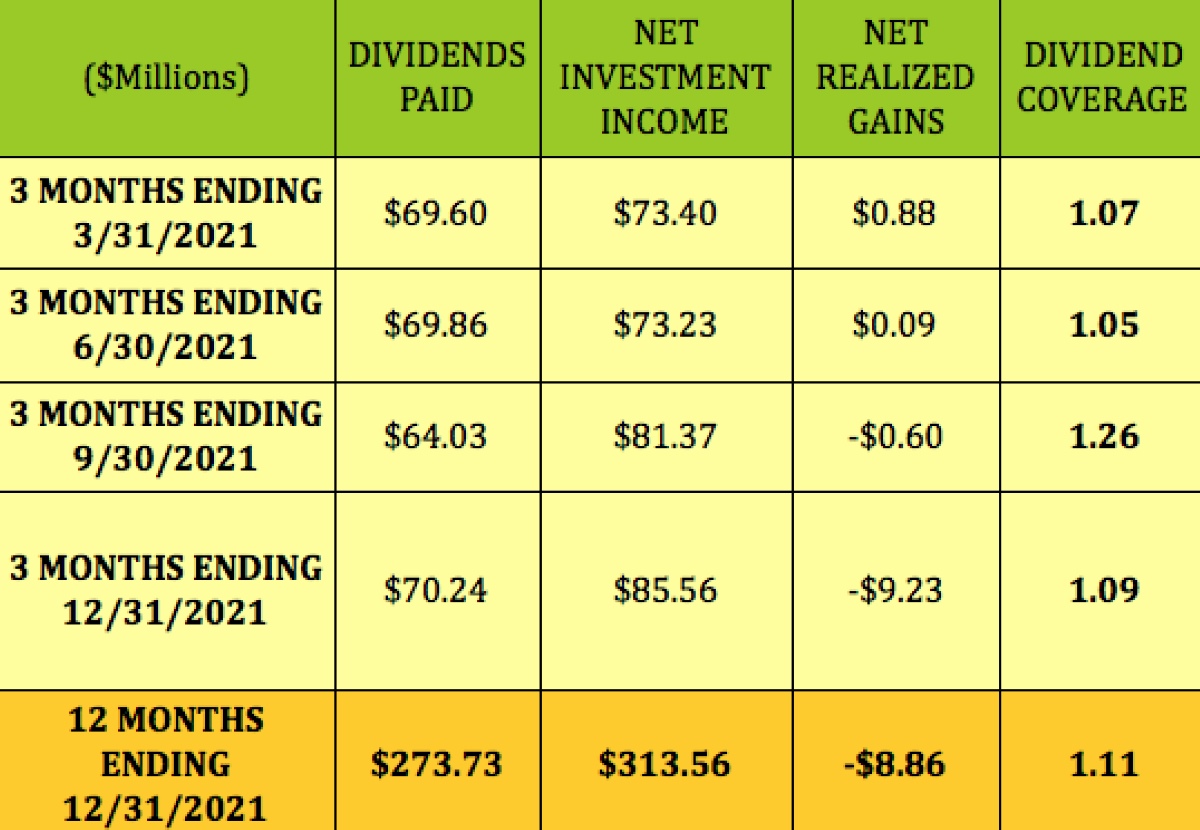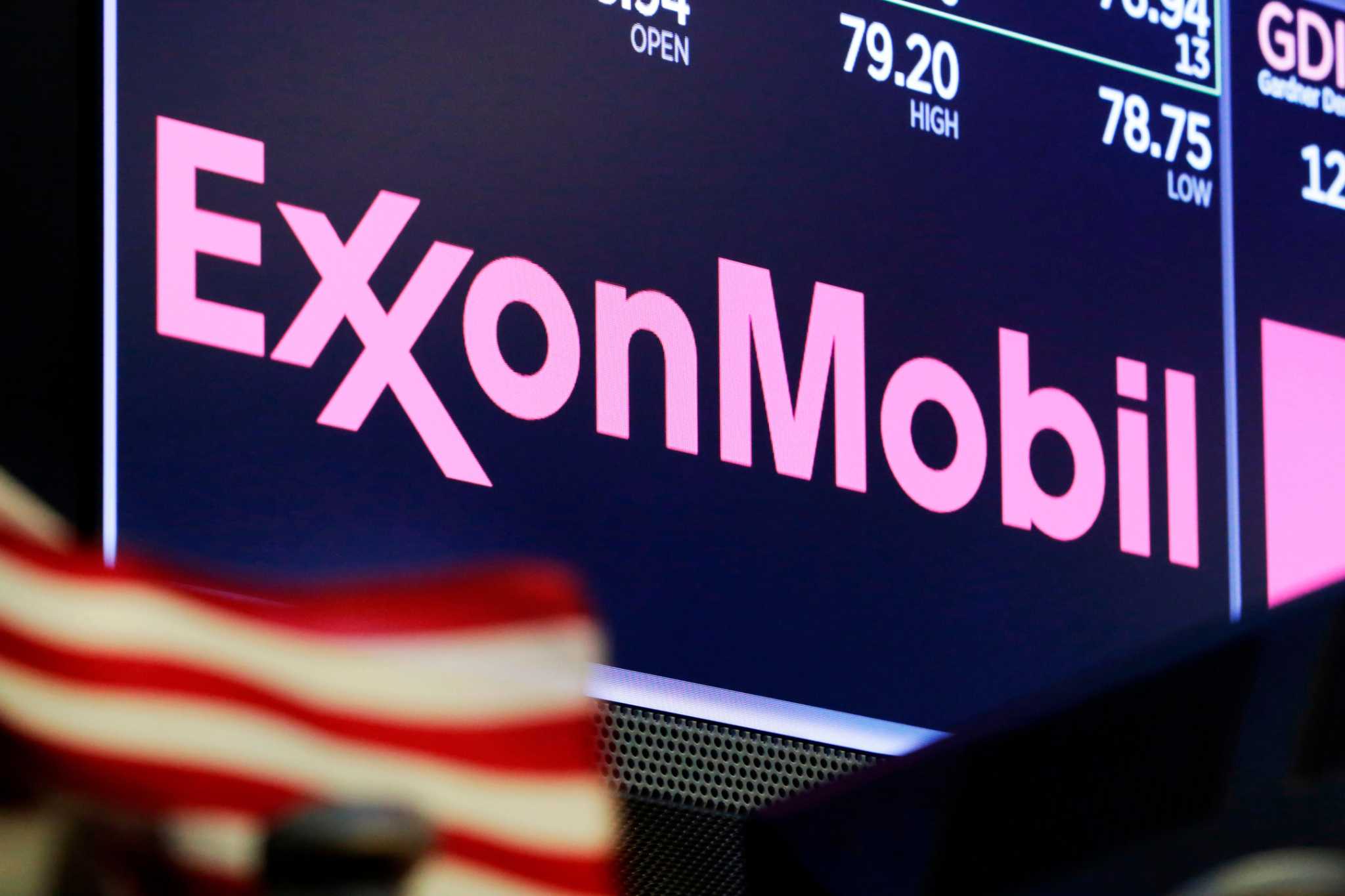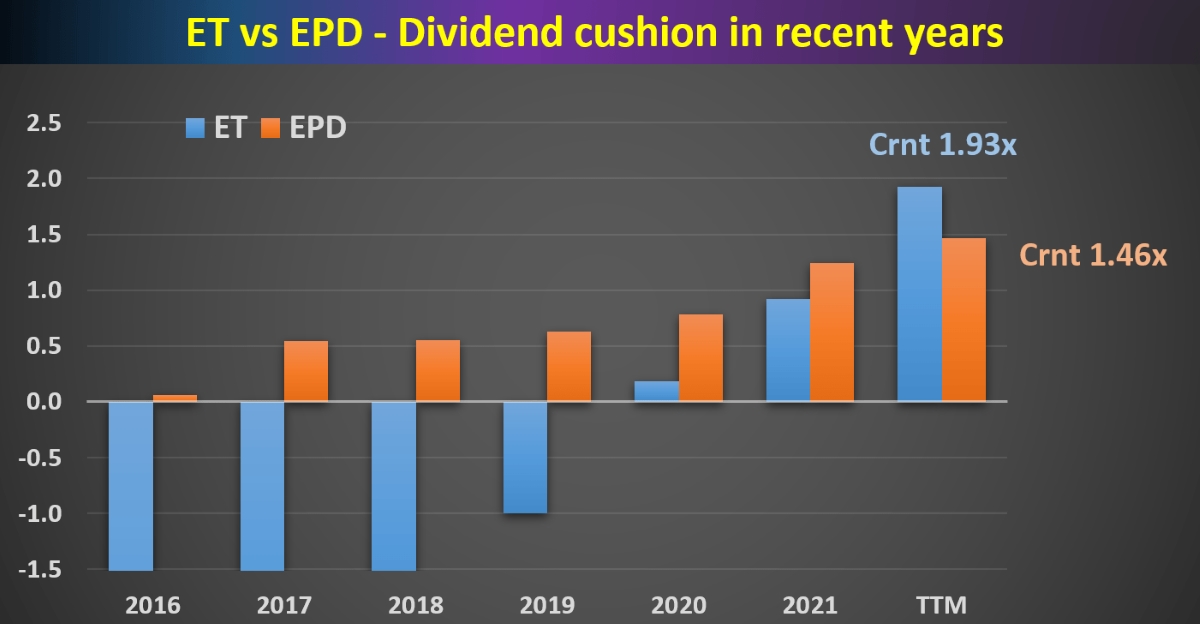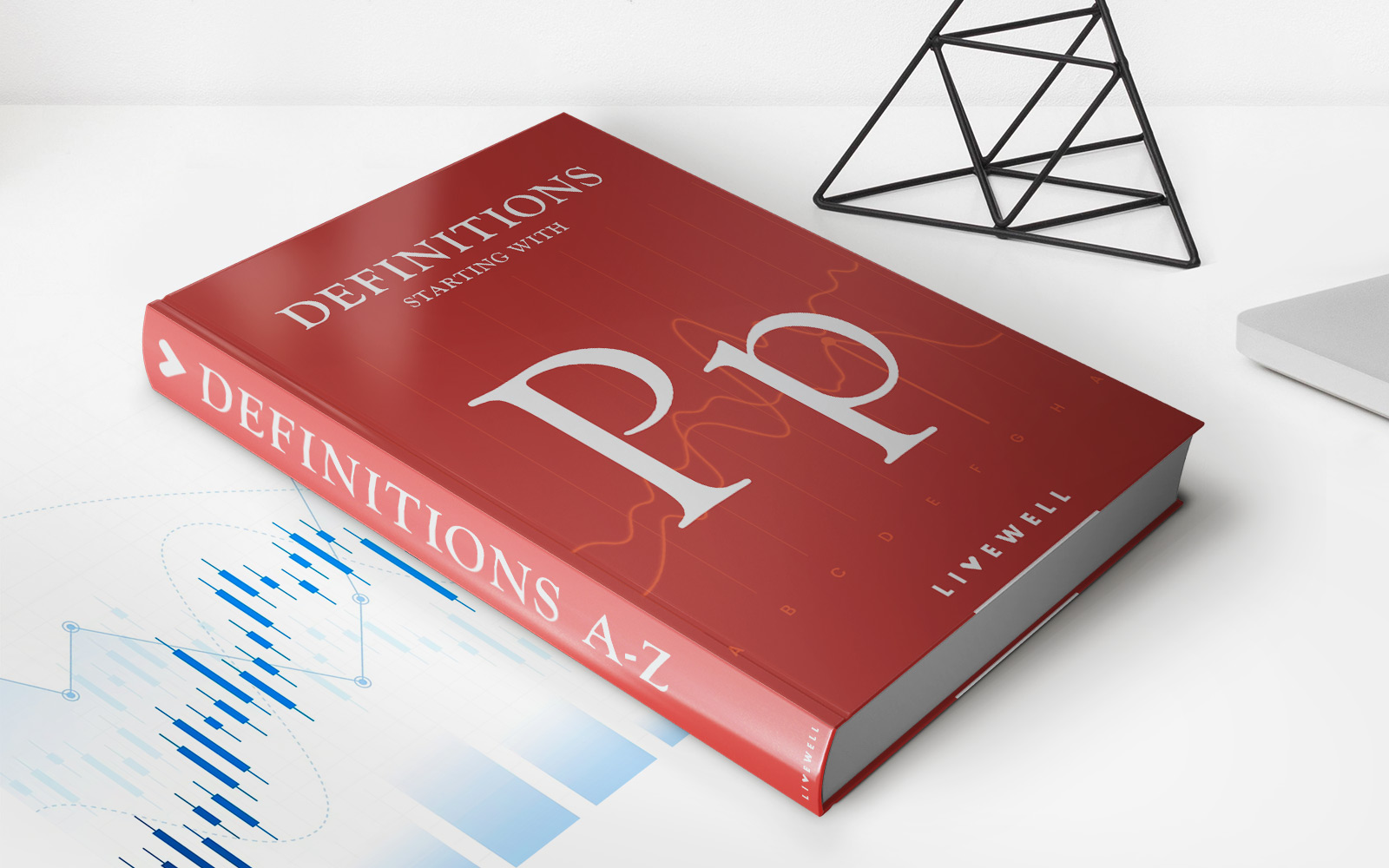

Finance
When Does PSEC Pay Dividends?
Published: January 3, 2024
Discover when PSEC, a finance company, pays out dividends and maximize your investment opportunities. Stay informed and grow your wealth with PSEC's dividend payment schedule.
(Many of the links in this article redirect to a specific reviewed product. Your purchase of these products through affiliate links helps to generate commission for LiveWell, at no extra cost. Learn more)
Table of Contents
Introduction
Welcome to our guide on understanding dividend payments and the specific dividend payment schedule for Prospect Capital Corporation (PSEC). As an investor, it is crucial to have a clear understanding of when dividends are paid, as it can greatly affect your investment strategy and overall financial goals.
Dividends are a vital component of investing in stocks, providing investors with a portion of the company’s profits. This regular income stream can be a significant factor in generating long-term wealth and achieving financial independence.
In this article, we will delve into the details of PSEC, a well-known finance company, and provide insights into its dividend payment schedule. We will discuss the various factors that influence the payment dates, as well as important terms such as ex-dividend date, record date, and payment date.
By gaining a comprehensive understanding of PSEC’s dividend payment schedule, you will be better equipped to make informed investment decisions. So, let’s explore the ins and outs of PSEC’s dividend payments and how they can impact your investment strategy.
Understanding Dividends
Before diving into PSEC’s dividend payment schedule, it is crucial to have a solid understanding of what dividends are and why they matter to investors. In simple terms, dividends are a distribution of a portion of a company’s profits to its shareholders.
Dividends are typically paid out by stable and established companies that generate consistent profits. By distributing dividends, these companies reward their shareholders for their investment and provide a regular income stream.
There are two main types of dividends that companies can issue:
- Cash Dividends: This is the most common type of dividend, where companies distribute cash payments to their shareholders. These cash payments can be received in various frequencies, such as monthly, quarterly, semi-annually, or annually, depending on the company’s dividend policy.
- Stock Dividends: In some cases, companies may choose to issue additional shares of stock as dividends instead of cash payments. This means that shareholders will receive additional shares of stock in proportion to their existing holdings.
Dividends are an essential factor to consider when evaluating investments, as they can significantly impact the total return on your investment. Investors who rely on dividend income often focus on high-quality dividend-paying stocks as a way to generate consistent cash flow.
Dividends can also provide insights into a company’s financial health and stability. A company that consistently pays dividends or increases its dividend payments over time is typically viewed as a sign of a healthy and profitable business.
It is important to note that not all companies pay dividends. Some companies, especially those in the growth phase, reinvest their profits back into the business to fuel expansion and innovation. These companies may choose to allocate their earnings towards research and development, acquisitions, or debt repayment instead of distributing them to shareholders.
Now that we have a solid understanding of dividends, let’s explore the specifics of PSEC and its dividend payment schedule.
Overview of PSEC
Prospect Capital Corporation (PSEC) is a leading finance company that specializes in providing customized financing solutions to middle-market companies. With a diverse portfolio of investments across various industries, PSEC offers debt and equity capital, as well as structured credit products.
PSEC focuses on investing in companies that demonstrate strong fundamentals, growth potential, and stable cash flows. Its investment strategies span a wide range of sectors, including energy, healthcare, technology, and consumer goods.
As a business development company (BDC), PSEC is required to distribute a significant portion of its earnings to shareholders in the form of dividends. This structure allows individual investors to access investment opportunities that are traditionally available only to institutional investors.
PSEC has a track record of consistent dividend payments, making it an appealing choice for income-seeking investors. The company’s ability to generate a steady stream of income not only provides financial stability but also showcases its proficiency in managing a well-diversified portfolio.
Furthermore, PSEC’s commitment to maintaining a conservative and disciplined investment approach has been instrumental in its success. By conducting thorough due diligence and risk assessments, PSEC aims to mitigate potential risks and generate attractive risk-adjusted returns for its shareholders.
Investing in PSEC offers the potential for both income generation and capital appreciation. With its expertise in identifying investment opportunities and a disciplined approach to risk management, PSEC strives to deliver consistent long-term value to its shareholders.
Now, let’s dig deeper into PSEC’s dividend payment schedule and understand when shareholders can expect to receive their dividend payments.
PSEC’s Dividend Payment Schedule
PSEC follows a consistent dividend payment schedule, providing investors with a predictable income stream. It is important for shareholders to be aware of the specific dates associated with PSEC’s dividend payments to effectively plan their investment strategies.
PSEC typically declares dividends on a quarterly basis. This means that the company announces the amount of the dividend and the upcoming payment dates for each quarter. By doing so, PSEC ensures transparency and gives shareholders ample time to prepare for the dividend distribution.
The dividend payment schedule for PSEC typically includes three key dates:
- Ex-Dividend Date: The ex-dividend date is the date on or after which a buyer of the stock is not entitled to receive the upcoming dividend payment. If you want to receive the dividend, it is crucial to purchase PSEC shares before the ex-dividend date.
- Record Date: The record date is the date on which a company reviews its shareholder records to determine who is eligible to receive the dividend. If you own PSEC shares on the record date, you are entitled to receive the dividend payment.
- Payment Date: The payment date is when the dividend is actually paid out to eligible shareholders. It is the date on which you can expect to receive the dividend in your brokerage account.
PSEC’s dividend payment schedule typically follows a consistent pattern, with the specific dates determined by the company’s board of directors. Shareholders should refer to the company’s official announcements or their brokerage accounts for the exact dates associated with each dividend payment.
It is important to note that dividend amounts can vary from quarter to quarter and depend on the company’s financial performance and available profits. The board of directors, in consultation with management, determines the dividend amount that will be distributed to shareholders.
By understanding PSEC’s dividend payment schedule and the associated dates, investors can effectively plan their investment strategies and have a clear idea of when they can expect to receive dividend income.
Now, let’s delve into the factors that can influence the specific dividend payment dates for PSEC.
Factors Affecting PSEC Dividend Payment Dates
Several factors can influence the specific dividend payment dates for Prospect Capital Corporation (PSEC). These factors are important to consider as they can impact the timing of when shareholders can expect to receive their dividend payments.
1. Financial Performance: PSEC’s dividend payment dates are closely tied to the company’s financial performance. The board of directors considers the company’s earnings, profitability, and available cash flow when determining the dividend amount and the timing of the payment.
2. Board of Directors Decision: The board of directors, as part of its fiduciary duty, is responsible for making decisions regarding dividend payments. They take into account various factors such as the company’s financial health, future growth prospects, and cash availability when setting the dividend amount and payment dates.
3. Regulatory Requirements: PSEC, as a business development company, is subject to regulations and requirements outlined by the Securities and Exchange Commission (SEC). These regulations can impact the timing and frequency of dividend payments, ensuring that PSEC complies with relevant laws and guidelines.
4. Market Conditions: Economic and market conditions can also influence the dividend payment dates for PSEC. In times of economic uncertainty or financial instability, the company may adjust its dividend schedule to mitigate risks and ensure the sustainability of its dividend payments.
5. Internal Policies: PSEC may have internal policies in place that guide its dividend payment process. These policies can outline specific criteria, such as maintaining a certain level of earnings or cash reserves, which can impact the timing and frequency of dividend payments.
It is important for shareholders to be aware that dividend payment dates can sometimes change due to these factors. Therefore, it is advisable to stay updated with official announcements from PSEC or consult your brokerage account for the most accurate and up-to-date information regarding dividend payment dates.
Now that we have covered the factors that can affect dividend payment dates, let’s explore the significance of the ex-dividend date for PSEC dividends.
Ex-Dividend Date for PSEC
The ex-dividend date is a crucial concept for investors who are interested in receiving dividends from Prospect Capital Corporation (PSEC). It is the date on or after which a buyer of the stock is not entitled to receive the upcoming dividend payment. Understanding the ex-dividend date is important because it determines whether or not investors will be eligible to receive the dividend.
When PSEC declares a dividend, they also announce the ex-dividend date. To be eligible for the dividend, you must own the stock prior to the ex-dividend date. If you purchase the stock on or after the ex-dividend date, you will not be entitled to receive the upcoming dividend payment. The ex-dividend date ensures that only shareholders who held the stock before the announcement are eligible to receive dividends.
It’s important to note that there is typically a settlement period for stock transactions. This means that if you plan to purchase PSEC shares to capture the upcoming dividend, you may need to do so a few days before the ex-dividend date, as it takes time for the transaction to settle.
For example, let’s say PSEC has announced a dividend with an ex-dividend date of October 15th. If you purchase shares on or before October 14th, you will be eligible to receive the dividend. However, if you buy shares on October 15th or after, you will not receive the dividend for that particular payment period.
It’s also worth mentioning that the stock price can be impacted by the ex-dividend date. On the ex-dividend date, the stock price may decrease by approximately the amount of the dividend, as new buyers will not be entitled to receive the upcoming dividend payment. This adjustment in stock price ensures that there is no advantage or disadvantage for investors buying or selling shares right before the ex-dividend date.
As an investor, it is important to be aware of the ex-dividend date when planning your investment strategy around PSEC dividends. By understanding when the ex-dividend date occurs, you can ensure that you purchase PSEC shares at the appropriate time to be eligible for the upcoming dividend payment.
Now, let’s move on to discussing the record date for PSEC dividends.
Record Date for PSEC Dividends
The record date is an important date for investors to be aware of when it comes to receiving dividends from Prospect Capital Corporation (PSEC). It is the date on which the company reviews its shareholder records to determine who is eligible to receive the dividend payment.
The record date is typically set by PSEC’s board of directors and is announced along with the dividend payment details. To be eligible for the dividend, investors must be listed as shareholders on the record date. It is not necessary to still hold the shares on the record date to receive the dividend. However, investors need to have owned the shares before the ex-dividend date to be eligible.
Once the record date has passed, PSEC will use its records to determine the shareholders who will receive the dividend payment. This information is typically based on the records maintained by the company’s transfer agent or brokerage firms.
It’s important to note that changes in share ownership after the record date do not impact an investor’s eligibility to receive the dividend. If an investor sells their shares after the record date, the buyer will not be entitled to receive the dividend payment. Conversely, if an investor buys shares after the record date but before the ex-dividend date, they will still be eligible to receive the dividend.
The record date serves as a cutoff point for determining dividend eligibility and helps ensure that the dividend is paid to the appropriate shareholders. It provides a clear reference for PSEC to establish the shareholder base and accurately allocate the dividend payment.
To stay informed about the record date for PSEC dividends, investors can refer to the company’s official announcements, financial reports, or their brokerage accounts. It’s essential to keep track of this date as it helps in planning investment strategies around dividends and ensures that you meet the requirements to receive dividend payments.
Now, let’s explore the final key date in PSEC’s dividend payment schedule – the payment date.
Payment Date for PSEC Dividends
The payment date is a highly anticipated date for investors eagerly awaiting dividend income from Prospect Capital Corporation (PSEC). It is the date on which the company actually distributes the dividend payments to eligible shareholders.
PSEC specifies the payment date along with the dividend announcement, providing shareholders with a clear timeline of when they can expect to receive their dividend income. The payment date is typically several weeks after the record date, allowing the company sufficient time to process and distribute the dividend payments.
On the payment date, eligible shareholders will see the dividend amount credited to their brokerage accounts or receive a physical check directly from the company. The specific method of payment may vary depending on the shareholder’s preferred method and the policies of their brokerage firm.
It’s important to note that the payment date is different from the ex-dividend date and the record date. The ex-dividend date and record date determine eligibility for receiving the dividend, while the payment date is when the actual distribution takes place.
Typically, PSEC adheres to a consistent dividend payment schedule, distributing dividends on a quarterly basis. This provides investors with a reliable income stream and helps in financial planning.
As an investor, it’s crucial to be aware of the payment date to ensure you can effectively manage your personal finances. This information allows you to anticipate when the dividend income will be available for reinvestment or for meeting your financial obligations.
To stay informed about the payment date for PSEC dividends, shareholders can refer to the company’s official announcements, financial reports, or their brokerage accounts. It is essential to mark the payment date on your calendar to ensure you can track and receive the dividend promptly.
Now that we have covered the payment date, let’s summarize what we have learned about PSEC’s dividend payment schedule.
Conclusion
Understanding the dividend payment schedule for Prospect Capital Corporation (PSEC) is crucial for investors seeking regular income from their investments. By familiarizing yourself with the specific dates and terms associated with PSEC dividends, you can effectively plan your investment strategy and capitalize on the potential financial benefits.
In this guide, we discussed the importance of understanding dividends and their role in generating income for shareholders. We then provided an overview of PSEC, highlighting its focus on providing customized financing solutions to middle-market companies and its commitment to consistent dividend payments.
We delved into PSEC’s dividend payment schedule, including the key dates of the ex-dividend date, record date, and payment date. These dates play a significant role in determining eligibility for receiving dividends and ensuring that dividend payments are distributed to the appropriate shareholders.
We also explored the factors that can influence PSEC’s dividend payment dates, such as financial performance, regulatory requirements, and market conditions. Understanding these factors helps investors anticipate any potential changes in the dividend schedule and adjust their investment strategies accordingly.
To effectively plan for PSEC dividends, it’s important to be aware of the ex-dividend date, as it determines whether you are eligible to receive the upcoming dividend. The record date confirms your ownership of shares prior to the announcement, while the payment date is when the actual dividend distribution takes place.
By staying informed about PSEC’s official announcements, financial reports, and your brokerage account, you can stay up-to-date with the company’s dividend payment schedule. This knowledge enables you to effectively manage your investment portfolio and make informed financial decisions.
Understanding PSEC’s dividend payment schedule is essential for investors looking to generate regular income and capitalize on potential dividend opportunities. By having a clear understanding of the specific dates and terms, you can ensure that you are well-prepared to receive your dividend payments and achieve your financial goals.
Disclaimer: The information presented in this article is for informational purposes only and should not be considered as financial or investment advice. It is recommended to consult with a qualified financial advisor or conduct thorough research before making any investment decisions.














